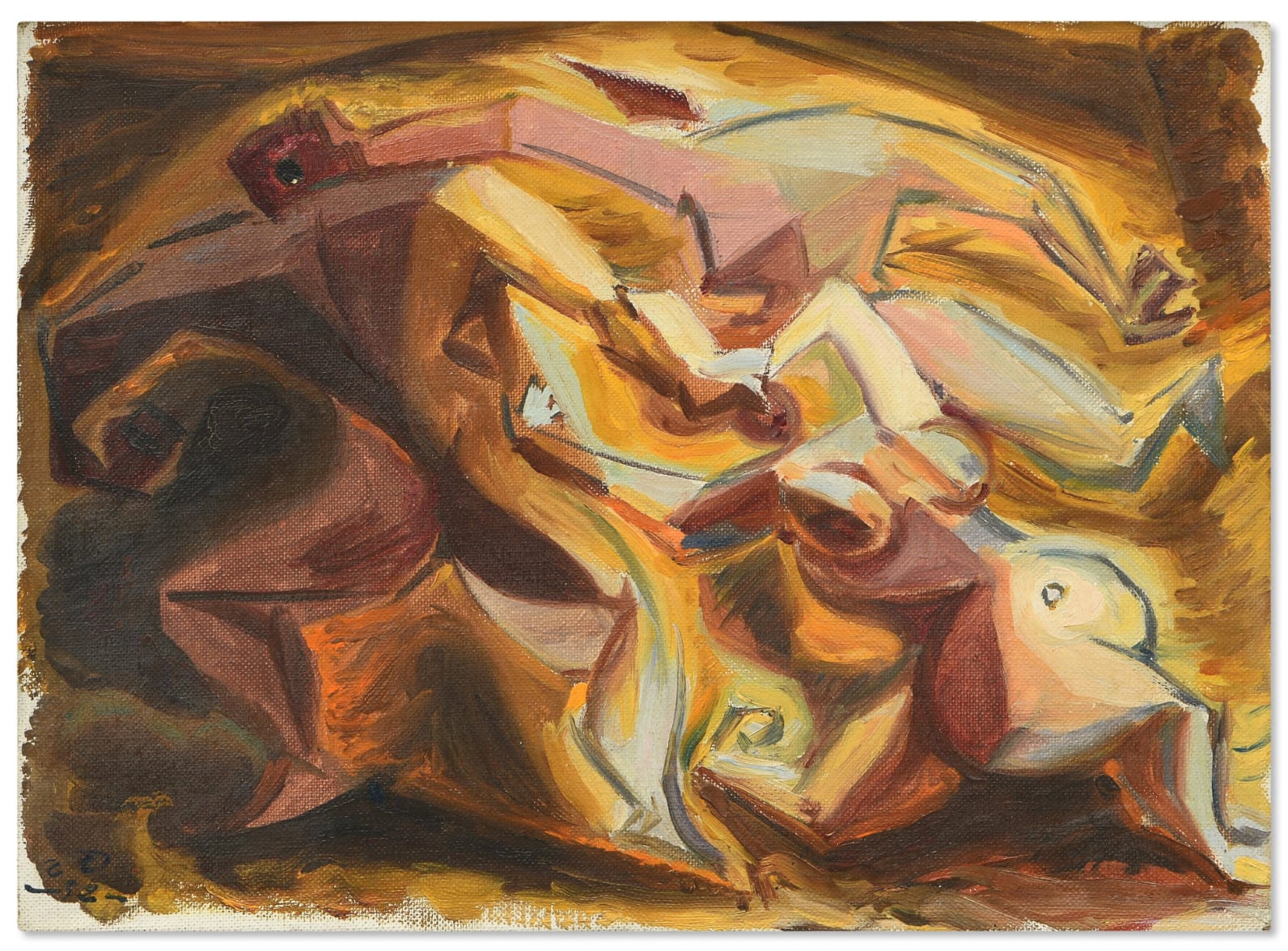André Masson French, 1896-1987
Le Rapt, 1932
Oil on canvas
24.3 x 33.2 cm
Monogramed and dated on the lower left «AM -32-»
Copyright The Artist
In Le Rapt, from 1932, Masson focuses on a dramatic trio, in opposition to the scenes of collective violence found in his large-format works. The three figures intersect and juxtapose...
In Le Rapt, from 1932, Masson focuses on a dramatic trio, in opposition to the scenes of collective violence found in his large-format works. The three figures intersect and juxtapose in a moment of high intensity, seeming to melt into the surrounding landscape. The scene is figée in speed, a still snapshot of violence. The form is dynamic, the execution swift, the line wandering, embracing patches of vivid color laid freely across the canvas. The rigidity of contours dissolves into colorful rhythm, pulse and raging passion. The figures interpenetrate in the murderous act, as in an embrace - for eroticism and violence are never separated in the painter's vision. The movement of the brush across the canvas is feverish, even convulsive. Responding to Matisse's question about his creative process in 1932, Masson explains: "At the start, I have neither an image nor a structure in mind; I draw and let my impulses guide me. Gradually, I see traces of shapes and let them emerge. I try to understand their meaning and bring order to the composition."
A primordial energy emerges from the composition, as Masson is always able to capture the system of vital forces that mysteriously animate existence. The line intervenes in imprecise chromatic patches as in a hunt or, better still, a chase. As Michel Leiris remarked of the artist, Masson succeeds "in fixing the absence of fixity", the unforeseen, elusive side of life. The color is bright, noisy and chaotic, the shapes angular and impossible to grasp - here we find the aesthetics of Futurist wartime exaltation and the untamed color of Fauvism that had critics crying out a few decades earlier that here we find ourselves "with the fauves".
A primordial energy emerges from the composition, as Masson is always able to capture the system of vital forces that mysteriously animate existence. The line intervenes in imprecise chromatic patches as in a hunt or, better still, a chase. As Michel Leiris remarked of the artist, Masson succeeds "in fixing the absence of fixity", the unforeseen, elusive side of life. The color is bright, noisy and chaotic, the shapes angular and impossible to grasp - here we find the aesthetics of Futurist wartime exaltation and the untamed color of Fauvism that had critics crying out a few decades earlier that here we find ourselves "with the fauves".
Provenance
Galerie Paul Rosenberg, Paris (No. inventaire PH 3080)Galerie Louise Leiris, Paris.
Collection particulière, France.
Publications
André Masson, Catalogue raisonné de l’oeuvre peint, Vol. II (1930-1941), p. 145, n°1932*20.
